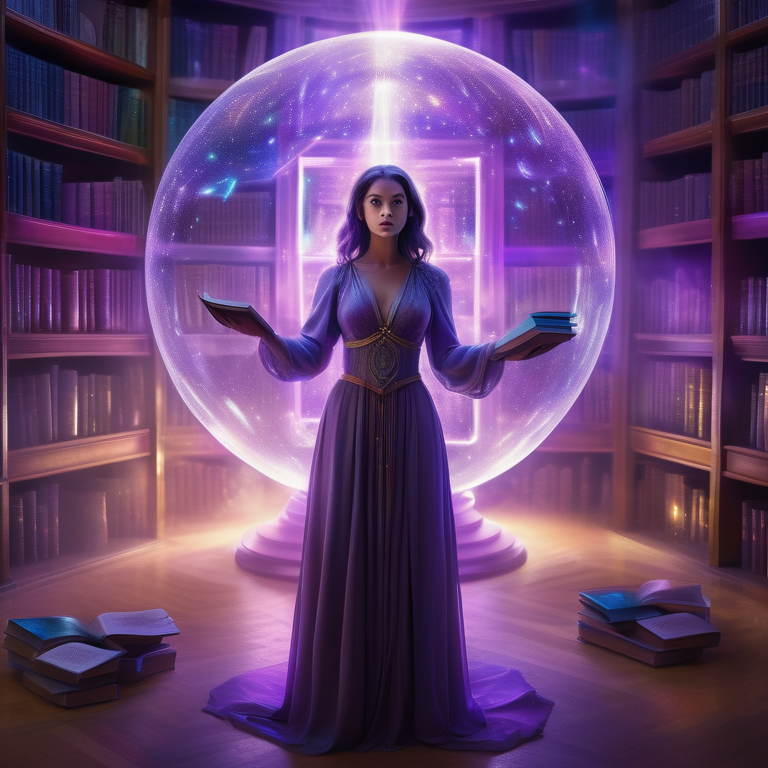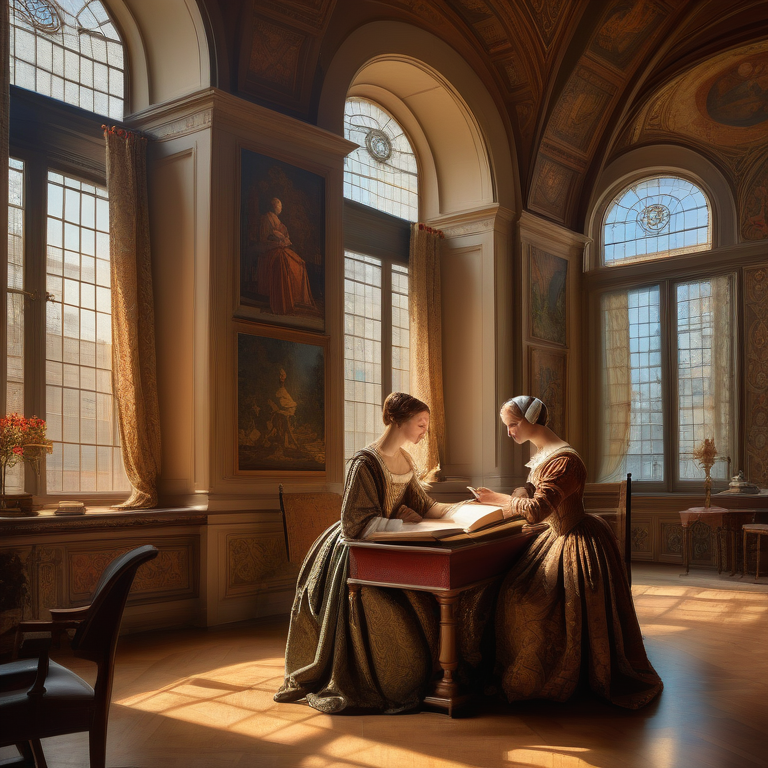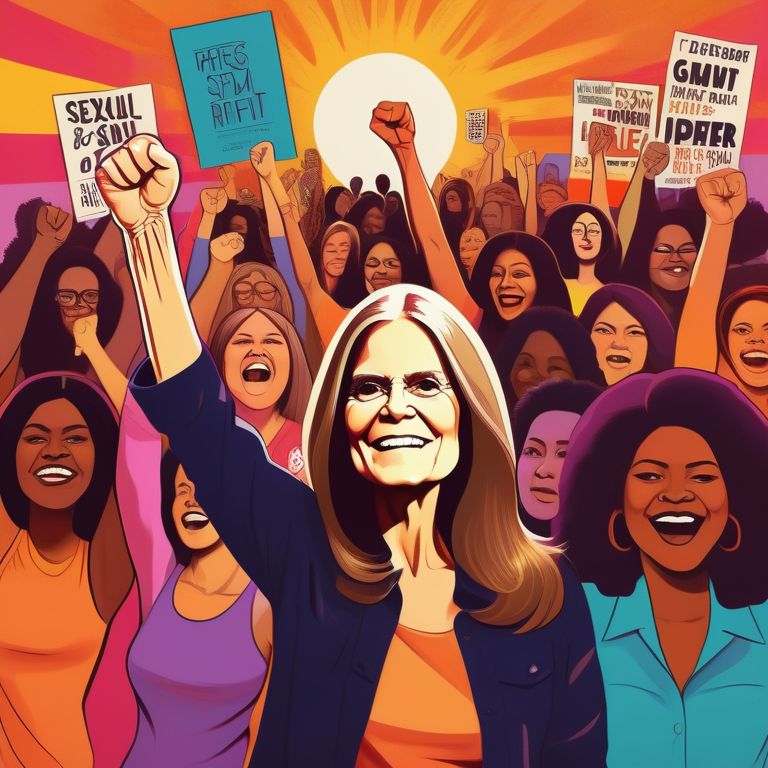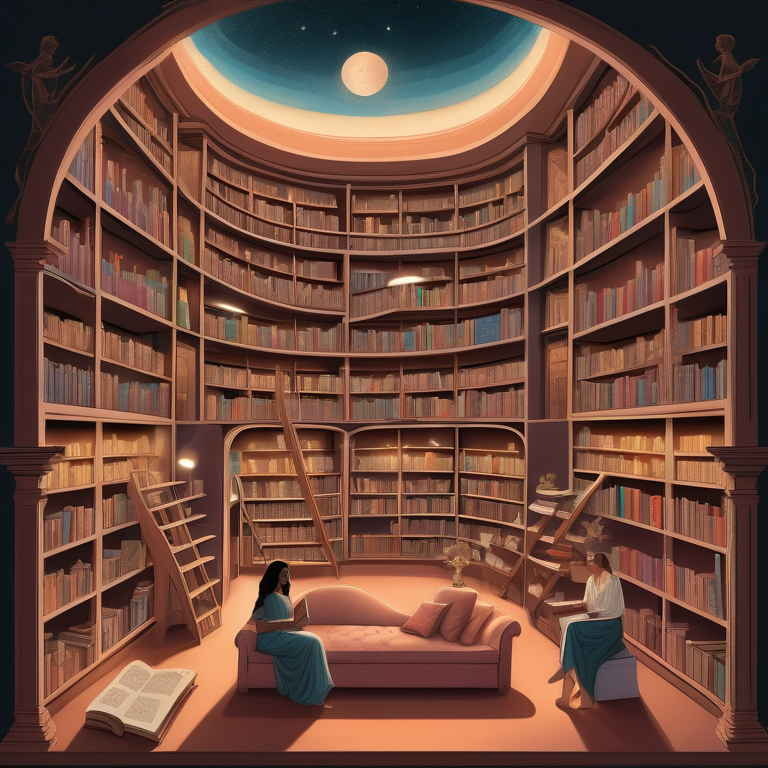Women’s Sexuality in Science Fiction and Fantasy

Key Highlights
- The evolution of women’s roles in science fiction and fantasy, from damsels in distress to leaders and innovators
- The impact of feminism on character development in science fiction and fantasy
- The representation of women’s sexuality in the genres of science fiction and fantasy
- The challenges and triumphs in the portrayal of women’s sexuality in film, games and literature
- The influential female in science fiction and and their impact on
- The intersection of and sexuality in the of science fiction and
Introduction
Fiction and fantasy have long been popular genres that allow for the exploration of imaginative and otherworldly concepts. These genres have also provided a platform for the examination of societal issues, including those related to gender and sexuality. In this blog, we will delve into the topic of women’s sexuality in science fiction and fantasy, exploring its evolution throughout the history of science fiction, the challenges and triumphs in its portrayal, and the influential female characters, particularly young women, that have shaped the genres.
Evolution of Women’s Roles in Sci-Fi and Fantasy
The representation of women in science fiction and fantasy has undergone significant changes in recent years. In the early years, women were often portrayed as damsels in distress, but as feminism gained momentum, characters began to break free from traditional gender roles. This evolution can be seen in the shift from the golden age of speculative fiction to the new wave movement.
From Damsels in Distress to Leaders and Innovators
In the early days of science fiction and fantasy, women were often portrayed as damsels in distress, in need of rescue by the male protagonist. However, as the genre evolved, so did the roles of female characters. The speculative fiction of the golden age saw the emergence of strong and capable women who played active roles in the story. This trend continued with the new wave movement, where female characters took on leadership positions and became innovators in their own right. This shift reflected the changing attitudes towards women in society and the desire for more complex and empowering representations in literature.
The Impact of Feminism on Character Development
Feminism has had a profound impact on the development of female characters in science fiction and fantasy. As the feminist movement gained momentum, authors began to challenge traditional gender roles and explore themes of gender equality. Female characters, including those who are queer, trans, or non-binary, became more complex and multi-dimensional, breaking free from stereotypes and taking on roles traditionally reserved for men. This shift allowed for a more nuanced exploration of women’s experiences and provided readers with relatable and inspiring role models. The impact of feminism on character development can be seen in works such as C L Moore’s “No Woman Born” and James Tiptree Jr’s “The Women Men Don’t See.”
Representation of Women’s Sexuality
The representation of women’s sexuality in science fiction and fantasy is a complex and multifaceted topic. These genres have the freedom to explore different aspects of sexuality, including sexual orientation, sexual behavior, and sexual desire. From the portrayal of same-sex relationships to the exploration of non-traditional forms of desire, science fiction and fantasy have pushed the boundaries of societal norms and provided a platform for critical reflections on reproduction, spanning countries, worlds, or the vast expanses of time and space.
Challenges and Triumphs in Portrayal
The portrayal of women’s sexuality in science fiction and fantasy has faced both challenges and triumphs. The film industry, game developers, and Hollywood have often struggled to accurately represent women’s sexuality, often falling back on stereotypes or objectification. However, there have also been significant triumphs, with works that challenge societal norms and provide empowering portrayals of heterosexual women’s sexuality, including in the realm of porn. These successes can be seen in the increasing diversity of characters and storylines, as well as the growing recognition of the importance of authentic and positive representation.
Breaking Stereotypes and Embracing Diversity
Breaking stereotypes and embracing diversity is a crucial aspect of the representation of women’s sexuality in science fiction and fantasy. By challenging traditional gender roles and exploring the full range of sexual identities and experiences, these genres have the power to promote acceptance and understanding. Some key points to consider in this discussion include:
- The importance of portraying diverse sexual orientations, including lesbian, gay, bisexual, and transgender characters
- Breaking away from traditional notions of gender and exploring non-binary and gender-fluid identities in the genre
- Embracing the concept of queer theory to challenge traditional assumptions about sexuality and gender
- Providing a platform for underrepresented voices and experiences, including those of people of color and individuals with disabilities.
Influential Female Characters in Sci-Fi and Fantasy
The presence of influential female characters in science fiction and fantasy has had a profound impact on both the genres themselves and society at large. These characters, whether in literature or on screen, have served as literary icons and screen heroines, challenging traditional gender roles and inspiring readers and viewers alike. The influence of these characters can be seen in the recognition they have received, such as awards like the Hugo Awards, and their impact on the field of science fiction studies in the USA.
Literary Icons and Their Influence on Society
The presence of influential female characters in science fiction and fantasy literature has had a significant impact on society. Literary icons like Juliet E McKenna have not only entertained readers but also challenged societal norms and provided inspiration for generations of readers. Their stories have explored complex themes of identity, sexuality, and power, contributing to the broader conversation on these topics. Furthermore, the recognition of their work through awards like the Hugo Awards has helped legitimize the genres and elevate the status of women writers within the field. The influence of these literary icons can be seen in the growing body of scholarship on science fiction and fantasy, where their works are studied and celebrated for their contributions to the genre. Additionally, their impact can be seen in the continued popularity of their works, as evidenced by the recent release of a new adaptation of Leigh Brackett’s Queen of the Martian Mysteries in July 2021.
Screen Heroines and Their Legacy
In addition to influential female characters in literature, screen heroines have also left a lasting legacy in the genres of science fiction and fantasy. From the iconic characters of Star Trek and Star Wars to the leading ladies of Hollywood blockbusters, these screen heroines have captivated audiences and inspired generations of viewers. Their impact extends beyond the screen, with their images and stories becoming cultural touchstones and influencing popular culture. The representation of strong and capable women in these roles has helped challenge traditional gender norms and pave the way for more diverse and empowering portrayals of women’s sexuality in the genres.
Exploring Taboos and Sensitivities
Science fiction and fantasy have often been platforms for exploring taboos and controversial themes. These genres provide a safe space for authors and creators to tackle sensitive subjects and challenge societal norms. When it comes to women’s sexuality, science fiction (SF) and soft science fiction (soft SF) have delved into topics that may be considered taboo or controversial in mainstream media. By doing so, these genres have opened up discussions and pushed boundaries, allowing for a deeper exploration of human experiences and desires.
How Literature and Film Tackle Controversial Themes
Literature and film have long been mediums through which controversial themes and ideas are explored. In the genres of science fiction and fantasy, authors and filmmakers have used these platforms to tackle sensitive topics related to women’s sexuality, such as censorship, sexual liberation, and the impact of societal norms. By creating fictional worlds and narratives, these creators have been able to challenge existing power structures and question societal expectations. However, the exploration of controversial themes in literature and film is not without challenges, particularly when it comes to censorship and audience reception. The examples of censorship in the United States in the 1960s, as well as the varied audience reception of controversial themes, highlight the ongoing struggles and triumphs in the representation of women’s sexuality in these genres.
The Role of Censorship and Audience Reception
Censorship and audience reception play significant roles in the representation of women’s sexuality in science fiction and fantasy. The film industry, game developers, and publishers often face pressure to alter or remove content that may be considered controversial or offensive. This can limit the exploration of diverse sexual experiences and perspectives, and perpetuate existing stereotypes and norms. However, audience reception can also have a powerful impact on the representation of women’s sexuality. Positive reception and support for inclusive and diverse portrayals can encourage creators to continue pushing boundaries and challenging societal norms. By supporting and celebrating works that provide authentic and empowering representations, audiences can play a crucial role in shaping the future of women’s sexuality in science fiction and fantasy.
The Intersection of Technology and Sexuality
The genres of science fiction and fantasy often explore the intersection of technology and sexuality, offering imaginative and thought-provoking narratives. From the implications of artificial intelligence and robotics on relationships, to the exploration of virtual realities and their impact on sexual experiences, these genres provide a platform for examining the evolving dynamics between technology and sexuality, including the exploration of science fantasy themes aimed at inducing arousal.
AI, Robotics, and the Future of Relationships
The advancement of artificial intelligence and robotics has the potential to profoundly impact the future of relationships and human sexuality. Science fiction and fantasy have explored the ethical and social implications of these advancements, questioning the boundaries between human and machine, and the potential consequences of intimate relationships with AI or robotic beings. These stories provide a platform for discussing complex questions surrounding consent, autonomy, and the nature of intimacy. By imagining and exploring potential future scenarios, science fiction and fantasy challenge us to consider the ethical and emotional dimensions of human-machine relationships.
Virtual Realities: New Frontiers of Experience
Virtual realities have opened up new frontiers of experience when it comes to human sexuality. In science fiction and fantasy, authors and creators have imagined worlds where technology allows individuals to explore and fulfill their desires in virtual environments. These narratives often raise questions about the nature of reality, the boundaries of consent, and the impact of virtual experiences on the real world. The table below provides examples of science fiction and fantasy works that delve into the concept of virtual realities and their implications for human sexuality.
|
Title |
Author/Filmmaker |
|
Neuromancer |
William Gibson |
|
Ready Player One |
Ernest Cline |
|
The Matrix |
The Wachowskis |
|
Snow Crash |
Neal Stephenson |
|
Black Mirror: San Junipero |
Charlie Brooker |
Gender Dynamics in Sci-Fi and Fantasy Worlds
The genres of science fiction and fantasy offer unique opportunities for reimagining gender dynamics and challenging traditional power structures. These genres allow for the exploration of alternative social norms and the redefinition of gender roles, providing a platform for examining the impact of power structures on relationships and society.
Power Structures and Their Impact on Relationships
The portrayal of power structures in science fiction and fantasy worlds has a significant impact on the relationships between characters. These genres provide a space for exploring alternative social hierarchies and challenging traditional gender roles. By imagining worlds where power dynamics are reimagined, authors and creators can examine the impact of social norms on relationships and question the inherent assumptions of gender and power. These narratives provide a platform for examining the complexities of human interactions and illustrating the potential for change in society.
Reimagining Gender Roles and Expectations
Science fiction and fantasy have long been at the forefront of reimagining gender roles and expectations. These genres provide a platform for challenging traditional notions of gender identity and exploring the complexities of gender in real life. Authors and creators have used science fiction and fantasy to push the boundaries of societal norms, questioning the limitations imposed by traditional gender roles and exploring the possibilities of gender fluidity and non-binary identities. The work of feminist scholars such as Judith Butler has been particularly influential in encouraging a deeper examination of gender norms and expectations in science fiction and fantasy.
Conclusion
The evolution of women’s sexuality in science fiction and fantasy reflects societal changes and challenges norms. From breaking stereotypes to embracing diversity, female characters have transitioned from damsels in distress to leaders and innovators, shaping powerful narratives. As literature and film explore controversial themes, representations become more empowering, enhancing character depth. Through AI, robotics, and virtual realities, the intersection of technology and sexuality opens new frontiers of experience. By reimagining gender dynamics and roles, sci-fi and fantasy worlds mirror our evolving perceptions. Share these insights on social media to celebrate the journey of women’s sexuality in speculative fiction.
Frequently Asked Questions
How Has the Depiction of Women’s Sexuality Evolved in Sci-Fi and Fantasy?
The depiction of women’s sexuality in science fiction and fantasy has evolved over time. In the early years, women were often portrayed as damsels in distress or objects of desire. However, as the genre has progressed, there has been a shift towards more complex and empowered portrayals. Women are now depicted as multidimensional characters with agency and sexual desires of their own. This evolution has been influenced by the changing social and cultural landscape, as well as the efforts of feminist authors and creators. Afrofuturism, a movement that combines elements of science fiction and African diaspora culture, has also played a significant role in promoting diverse and empowering representations of women’s sexuality in the genre.
How have representations of women’s sexuality in science fiction and fantasy evolved over time?
Representations of women’s sexuality in science fiction and fantasy have become more diverse and inclusive over time. Authors and creators have moved away from stereotypical and objectifying portrayals, and instead, they have explored the complexities of sexual orientation and desire. These depictions often reflect real-life experiences and challenge societal norms. For example, authors in New York’s speculative fiction scene have been at the forefront of pushing boundaries and exploring a wide range of sexual experiences and identities in their works.
Can female characters in science fiction and fantasy challenge traditional gender roles through their sexuality?
Yes, female characters in science fiction and fantasy can challenge traditional gender roles through their sexuality. By exploring a wide range of sexual behaviors and desires, these characters can defy societal expectations and break free from restrictive gender norms. Through their sexuality, female characters can assert agency and challenge the status quo, empowering both themselves and readers.
Are there any notable examples of empowering portrayals of women’s sexuality in science fiction and fantasy literature or media?
Yes, there are several notable examples of empowering portrayals of women’s sexuality in science fiction and fantasy literature and media. For instance, in Ursula K. Le Guin’s “The Left Hand of Darkness,” the protagonist’s sexuality is depicted as fluid and non-binary, challenging traditional notions of gender and desire. Similarly, in the “Game of Thrones” television series, several female characters assert their agency through their sexuality, using it as a means of gaining power and influence.
How can the exploration of women’s sexuality enhance the depth and complexity of characters in science fiction and fantasy works?
The exploration of women’s sexuality in science fiction and fantasy works can enhance the depth and complexity of characters. By delving into their desires, experiences, and relationships, authors can create multidimensional characters that readers can relate to and empathize with. This adds depth to the storytelling and allows for a more nuanced portrayal of women’s experiences.




